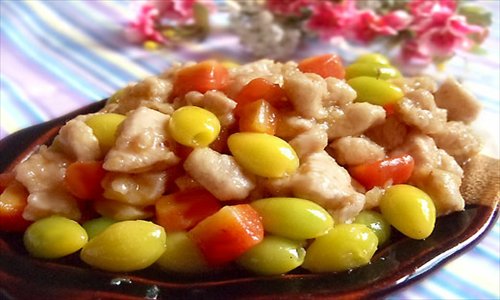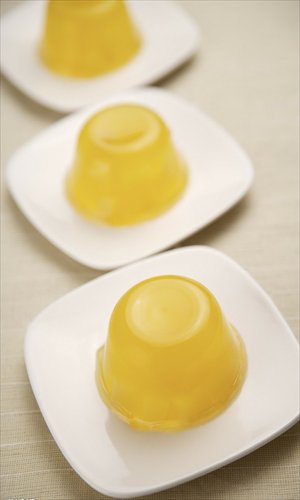Dew date
Editor's Note
The ancient Chinese created an agricultural solar system - still in use today - that is based upon their observation of crops, climate, astrology, and the study of animal and plant life cycles. The system guided farmers as to when to sow seeds and when to harvest them, and this system has now been in place for more than 2,000 years.
Today, with advances in science and technology, agriculture depends less on this ancient wisdom. But this seasonal calendar still operates as a reference guide for gourmands to seek out the best times for seasonal delicacies and for health experts to plan nutritious diets.
In a single year, the system features 24 "solar terms," each lasting one day and occurring every two weeks. Each has its own name and characteristics. The Global Times is presenting a weekly series examining which foods and delicacies are best enjoyed during these periods, as well as tips on preserving general health.
Bailu, or "white dews," will take place on September 7 this year. As the name of this solar term suggests, it is a period when the temperature remains generally warm during the day, while dropping considerably during the night. The moisture in the air condenses during the cold hours of darkness and the following morning droplets of dew can be clearly seen on the grass and leaves.
After the arrival of bailu, nature enters into another period of rainy weather in some regions of China. Old sayings in Chinese reflect these changes such as "the rain falls down as soon as the roads dry up" and "it's rare to see 10 consecutive sunny days." The rainfall during this period is said to be good for helping fruit and crops to ripen and mature.
The heat and daily hours of sun substantially decrease during this time, and in order to adjust the body to these changes in the seasonal cycles, people should adapt themselves to the increasingly longer nights and cooler weather. Eating food and drinks that are considered "warm" according to the theories of traditional Chinese medicine (TCM), and foods that can help promote bodily hydration, are both said to be helpful in boosting the function of the internal organs. The Global Times has selected some recipes that achieve these results, and that are healthy, tasty and easy to prepare at home.

Stewed chicken with ginkgo nuts
The fresh ginkgo nut is one of the symbols of autumn. Be warned, however, that they are potentially toxic and no more than 20 should be used in one shared dish. These nuts are said to benefit the respiratory system and to ease symptoms of asthma, bronchitis, and coughs. The ginkgo is also a healthy, low-fat substitute to other nuts, such as peanuts and walnuts, and it will not add any extra burden to your cholesterol intake.
Ingredients:
Three hundred grams skinless and boneless chicken leg meat - diced, 100 grams ginkgo nuts - cracked and peeled, one egg white, three sprigs of spring onion cut into short sections, one teaspoon of sesame oil, two tablespoons of cooking oil, two tablespoons of starch, one tablespoon of Chinese rice wine, one teaspoon of salt, one teaspoon of sugar, a pinch of freshly milled pepper
Method:
Marinate the diced chicken leg meat with salt, wine, pepper, starch and egg white for 15 to 30 minutes
Slightly boil the ginkgo nuts in hot water for five to 10 minutes and drain
Heat up a wok and add cooking oil
When the oil is hot, add the spring onion and quickly stir-fry until aromatic
Add the diced chicken leg meat and continue to stir-fry
Pour in the ginkgo nuts and stir-fry together with the chicken until both are cooked and serve hot

Longan jelly
People in Fuzhou, Fujian Province, traditionally eat longan (a kind of tropical fruit) on the day of bailu, as the fruit is at its prime. Longan is believed to be able to boost blood circulation and to soothe the mind.
Fresh, canned, or dried longan is widely used in Chinese dessert recipes. Longan jelly is an excellent choice for both children and adults enjoyed after a meal. It can be easily made at home which means it is completely free from any food colors, additives or preservatives.
Ingredients (for six cups):
Twenty grams gelatin, 1.5 liters water, 100 grams sugar, one can of longan fruit and syrup
Method:
Cut the gelatin with scissors into small pieces and rinse under running water
Soak the gelatin in cold water for a few minutes to let it soften, which will help it to dissolve properly later
Remove the gelatin from the cold water and squeeze to remove excess water
Boil a pot of 1.5 liters water, and then pour in the gelatin and sugar
Keep it boiling until it totally melts. You can test with chopsticks to see whether the gelatin has liquefied
Turn off the heat, pour the can of longan fruit syrup into the warm mixture, keep stirring and add sugar according to taste
Pour the cooked jelly into an individual cup or container with four to five pieces of longan fruits topped on the jelly
You can also add pieces of other diced fruit, such as strawberry or pineapple to make it colorful
Keep in the refrigerator for 2 hours before serving